How a Forgotten Piece of Furniture Found a Second Life
Bathrooms are one of the most gratifying rooms to redo, because within a relatively little square-footage, small changes have a big impact.
Related: Our Favorite Pieces of Wall Art Aren’t All Paintings
This is why, despite the peeling squares of linoleum and mustard-yellow laminate countertops in our kitchen, the main floor bathroom was the first room in our house to get a full makeover. As was the case with opening up our floor plan, the goal in redoing this bathroom was to do as much as we could ourselves and keep the price tag reasonable. Keeping costs down meant that although we could probably use a new bathtub, we decided to live with the one we have and we used inexpensive white subway tile—albeit in a herringbone pattern—for the shower walls.

Not my bathroom, though I would happily take it. (Photo: Royal Roulotte/Food52)
But since we were keeping most of the bathroom fairly simple and affordable, I felt like it needed one special, standout feature. Enter a smallish sideboard that I’d picked up at a resale shop thinking I’d use it for extra storage in the kitchen. We’d lived with its white and gold peeling paint for years, declaring it “shabby chic” (it was not), and finally relegated it to the basement—unable to part with it—after replacing it with a larger, more functional piece in the kitchen.
Related: A Custom Kitchen Redesign That’s Making Us Rethink Our Cabinetry
The sideboard needed a little love, but it was the right height for a vanity, and just deep enough to accommodate a small sink. It was a team effort project: I stripped, stained, and sealed it; my husband cut holes to accommodate the sink, faucet, and plumbing; and then we turned it into a functional vanity (not all necessarily in that order). It looks so much better than it did before, and it’s now my favorite part of the bathroom by far.
Related: When Life Gives You a Rusty Wok, Make a Lamp

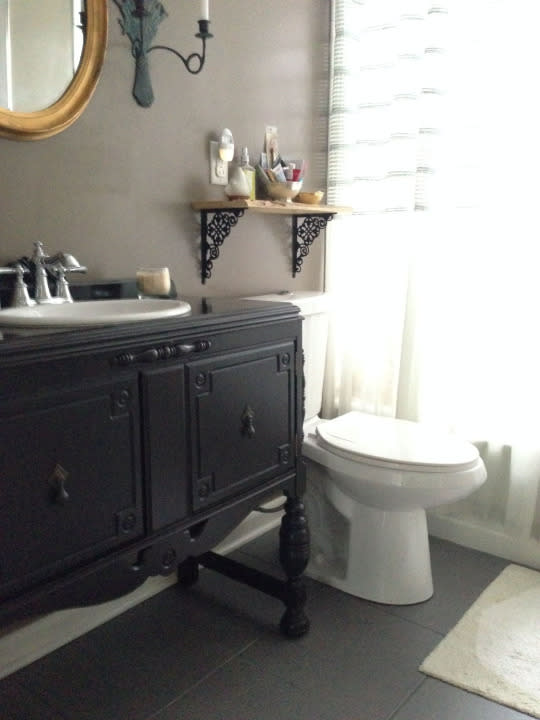
Before: boring vanity, After: super cool vanity. (Photos: Lindsay-Jean Hard/Food52)
Disclaimer: This is not meant to imply I’m endorsing tearing out period-appropriate original sinks and vanities or destroying quality antique furniture to turn into vanities. I’m in favor of honoring the history of a house and finding ways to work around original fixtures. Our vanity was not a nice piece—we could have walked into any big box hardware store and found a match for it today—nor was the sideboard I refinished a valuable one.
Related: 5 Design Ideas From the New Ace Hotel You Could Actually Do at Home
You’ve almost certainly seen a dresser that’s been turned into a vanity, but if you’d like to try pulling it off in your own home, consider other types of furniture as well. You really just need to keep in mind the height and depth (to make sure you—or a professional—can retrofit it with a sink). As it turns out, lots of furniture besides dressers can be turned into sink vanities as well.
Related: How to Open Up a Room Without Tearing Down a Wall

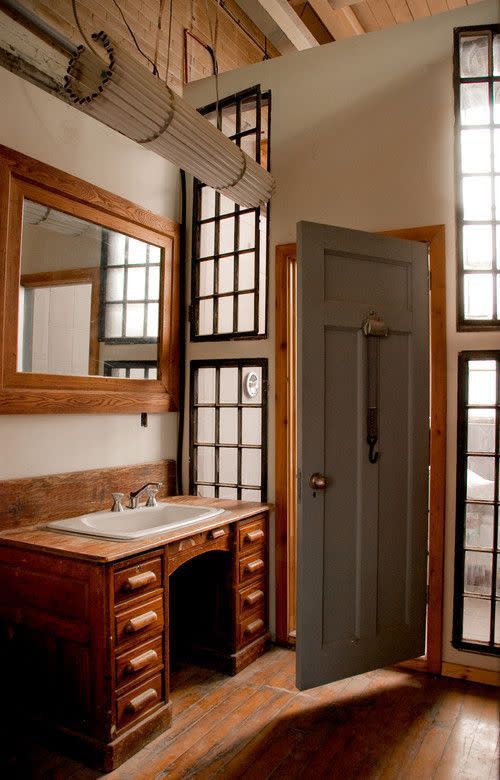
(Photos: Houzz/Food52, Houzz/Food52)
Whether large or small, desks make great vanities—and they have multiple drawers for storage!
Related: Speed Decluttering: How to Clean Out in a Heartbeat
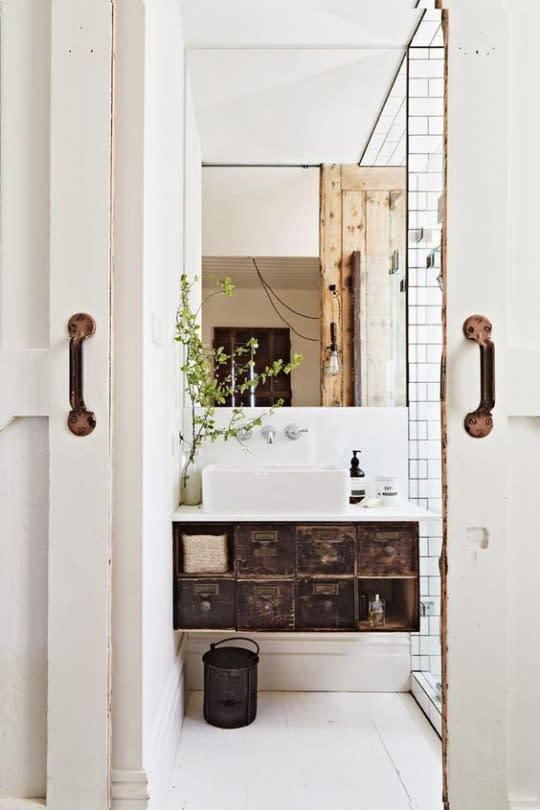

(Photos: Pinterest/Food52, Houzz/Food52)
Think about your storage needs when selecting a piece. Would multiple small drawers or a single large cabinet work better in your bathroom?
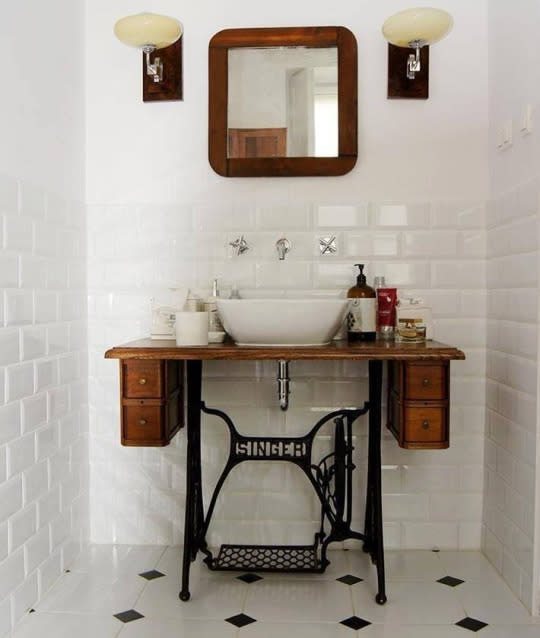

(Photos: Astuces Bricolage/Food52, Pinterest/Food52)
Even unique pieces like a sewing machine table or a workbench can have a renewed purpose as vanities. Note that in the above left image, the sink sits right on top.
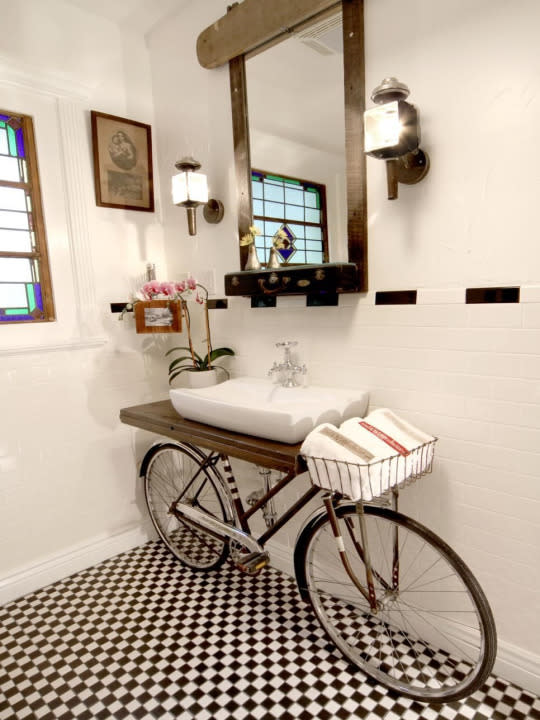
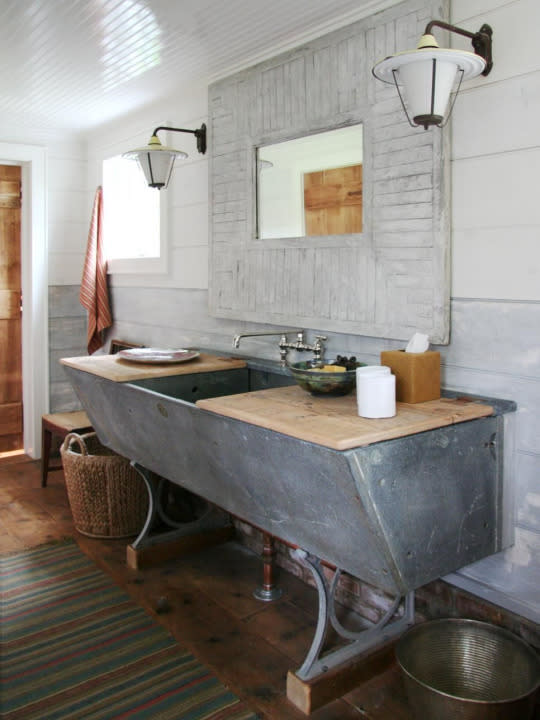
(Photos: DIY Network/Food52, DIY Network/Food52)
And the successful re-use of this bike and cow trough prove that it’s okay to think really outside the box.
By Lindsay-Jean Hard.
